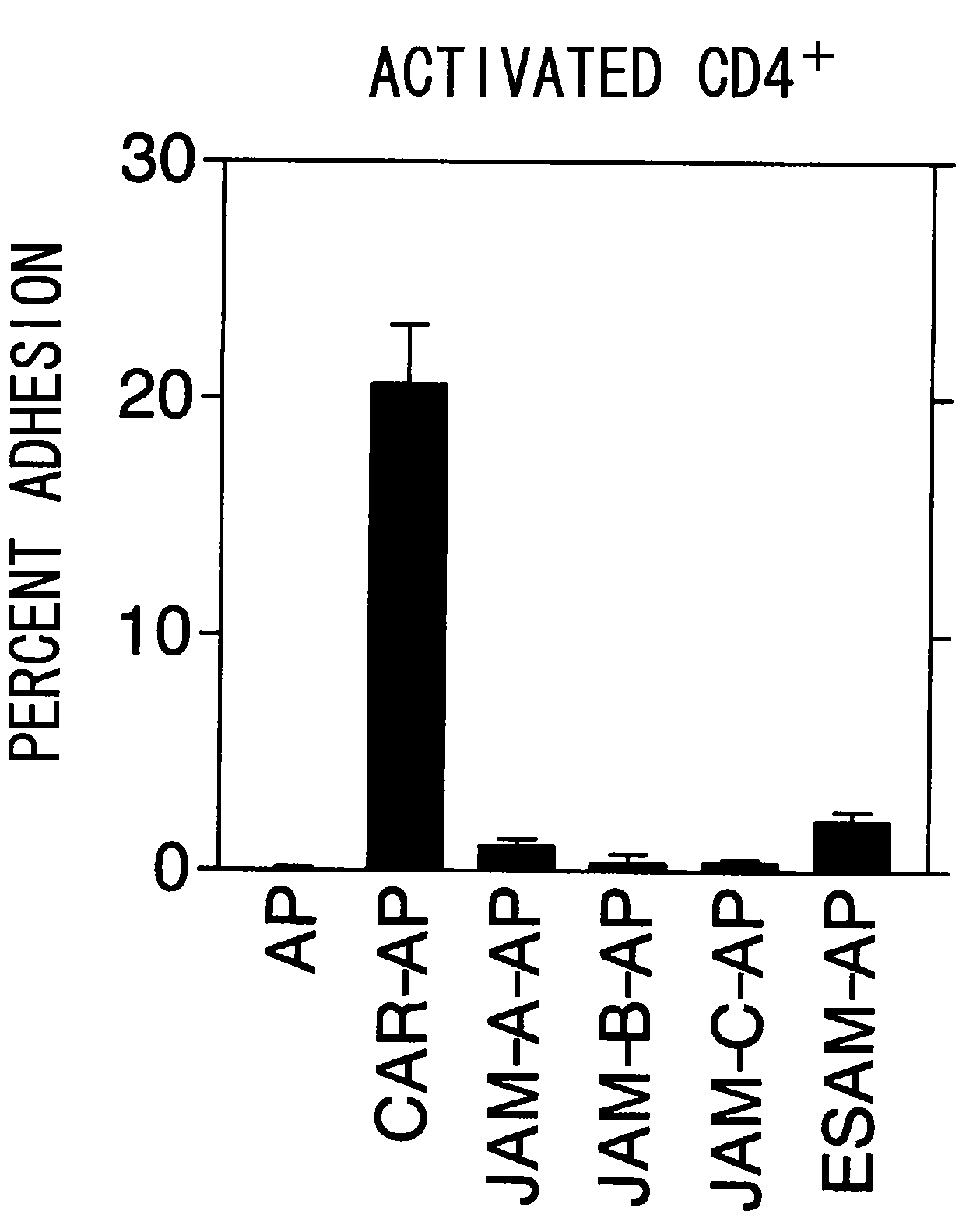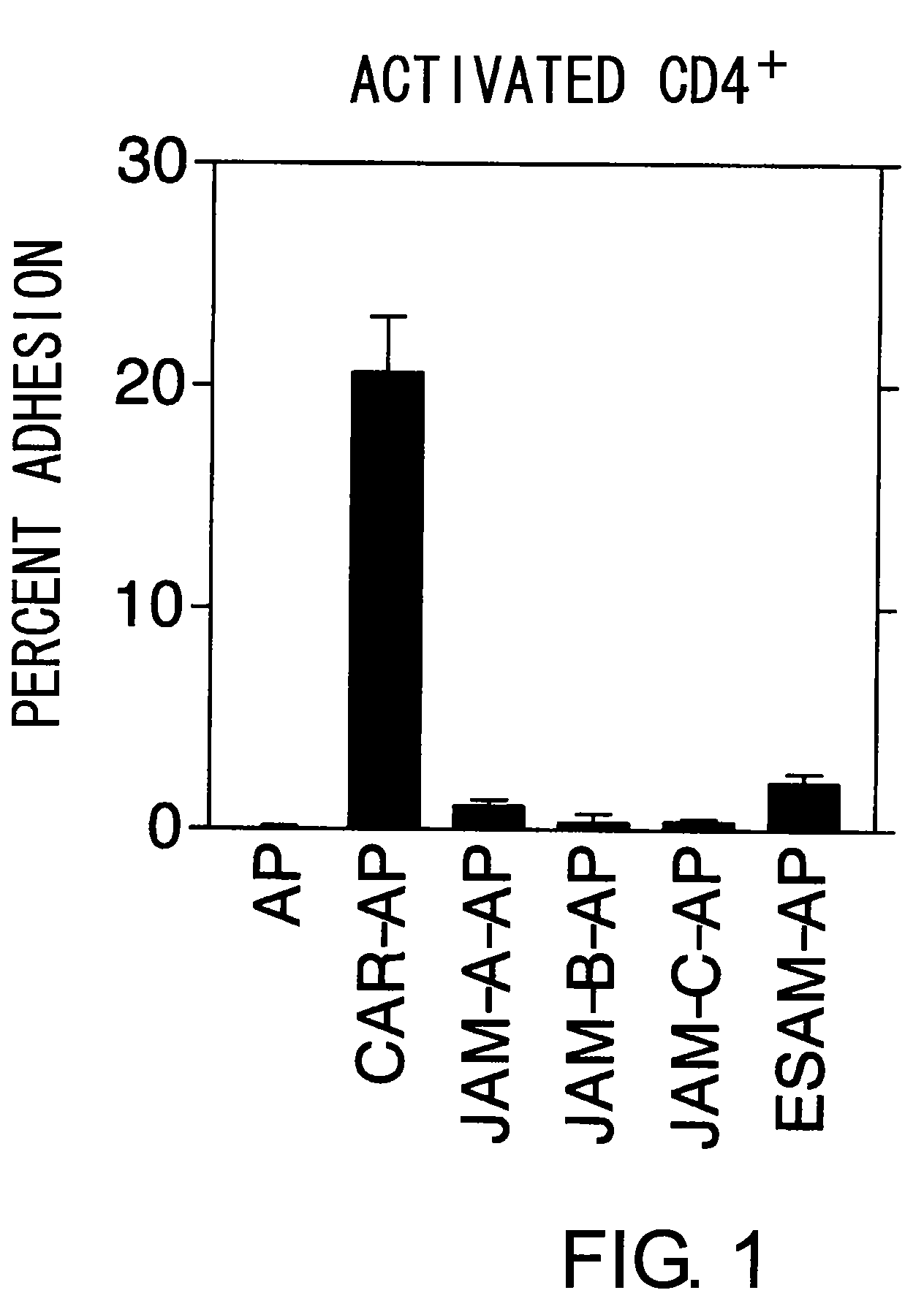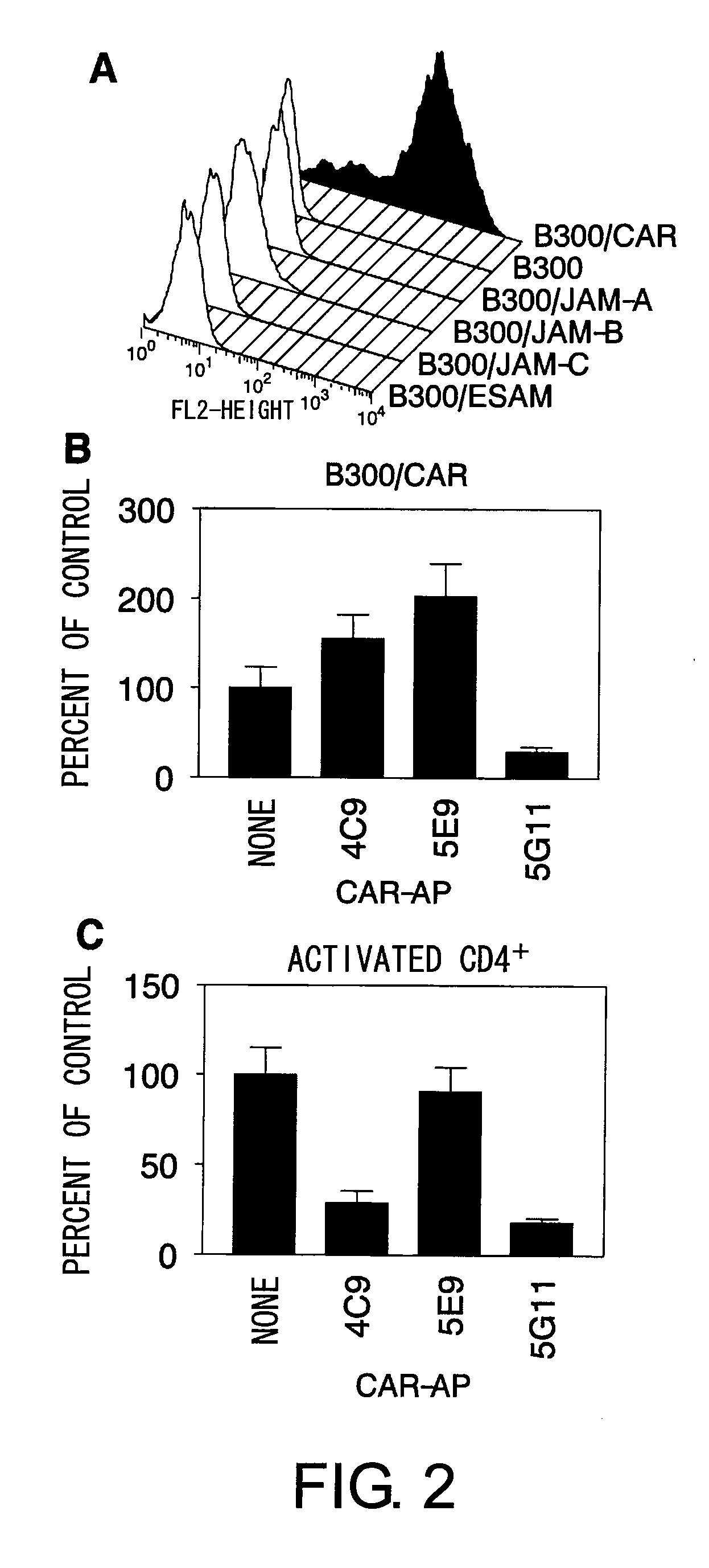Methods For Detecting Th1 Cells
a th1 cell and th1 cell technology, applied in the field of th1 cells detection, can solve the problems of inability to achieve efficient immune reactions without, and the understanding of extravascular migration is still poorly understood, so as to achieve the suppression of cellular infiltration of specific lymphocytes and control the effect of immune reaction diseases
- Summary
- Abstract
- Description
- Claims
- Application Information
AI Technical Summary
Benefits of technology
Problems solved by technology
Method used
Image
Examples
example 1
Production of Cells Expressing the Full-Length Adhesion Molecules
[0225]The full length cDNAs of the adhesion molecules JAM-A, JAM-B, JAM-C, ESAM, and CAR were cloned as described below. A mouse heart cDNA library (Clontech Quick Clone 7133-1) was used as template for JAM-A, JAM-B, and JAM-C; mouse small intestine cDNAs were used as template for ESAM; and mouse spleen cDNAs were used as template for CAR. The primers for each were designed based on GenBank™ sequences (JAM-A (U89915), JAM-B (AF255911), JAM-C (AJ300304), ESAM (AF361882), and CAR (NM009988)) for amplification by PCR. For example, the primers shown below were used for CAR:
(SEQ ID NO: 5)mCAR F1:GCGGTCGACGCCACCATGGCGCGCCTACTGTGCTTCGTGCT(SEQ ID NO: 6)mCAR R2:CGCCGCGGCCGCTTATACCACTGTAATGCCATCGGTCT
[0226]The obtained cDNA fragments were inserted into the expression vector pMXII IRES-EGFP (Oncogene (2000) 19(27):3050-3058) and introduced into the 293 / EBNA-1 cell line (Invitrogen) together with the packaging vector pCL-Eco (Imgen...
example 2
Preparation of Activated Lymphocytes
[0227]Mouse spleens were ground on a 100 μm mesh and erythrocytes were hemolyzed to obtain splenocytes. CD4-positive cells were isolated from the splenocytes using MACS (Miltenyi Biotec). 4×107 splenocytes were suspended in 70 μl of PBS containing 1% FCS and 2 mM EDTA, and treated with FcR blocking reagent (Miltenyi Biotec). Anti-CD4 antibody-immobilized magnetic beads were added in and the reaction was carried out at 4° C. for 20 minutes. After washing, positive selection was carried out using AutoMACS. The proportion of CD4-positive cells was 90% or more. The purified CD4-positive cells were added to plates with anti-CD3 antibody immobilized at 1 μg / ml, and cultured in the presence of 10 μg / ml anti-CD28 antibody. After two days, 20 ng / ml IL-2 was added and cultured, and activated lymphocytes at seven to nine days after activation were used in experiments.
example 3
Production of Chimeric Proteins Between Alkaline Phosphatase and the Extracellular Region of Adhesion Molecules
[0228]First, the pcDNA3.1(+)-SEAP(His)10-Neo vector was produced as follows: the intrinsic SalI site of pCDNA3.1 (+)-Neo vector (CLONTECH) was deleted by SalI digestion followed by blunting. The cDNA fragment SEAP (His) 10 was amplified by PCR using pDREF-SEAP His6-Hyg (J. Biol. Chem., 1996, 271, 21514-21521) as template and primers to which HindIII and XhoI have been attached to the 5′ end and 3′ end, respectively. The resulting cDNA fragments were digested with HindIII and XhoI, then inserted into the pCDNA3.1 (+)-Neo vector from which the SalI site has been deleted.
[0229]Next, the extracellular regions of the adhesion molecules were amplified by PCR using the full-length cDNAs obtained in Example 1 as templates and primers to which SalI and NotI have been attached to the 5′ end and 3′ end, respectively (for example, the primers below were used for CAR).
(SEQ ID NO: 5)mCAR...
PUM
| Property | Measurement | Unit |
|---|---|---|
| pH | aaaaa | aaaaa |
| temperature | aaaaa | aaaaa |
| temperature | aaaaa | aaaaa |
Abstract
Description
Claims
Application Information
 Login to View More
Login to View More - R&D
- Intellectual Property
- Life Sciences
- Materials
- Tech Scout
- Unparalleled Data Quality
- Higher Quality Content
- 60% Fewer Hallucinations
Browse by: Latest US Patents, China's latest patents, Technical Efficacy Thesaurus, Application Domain, Technology Topic, Popular Technical Reports.
© 2025 PatSnap. All rights reserved.Legal|Privacy policy|Modern Slavery Act Transparency Statement|Sitemap|About US| Contact US: help@patsnap.com



